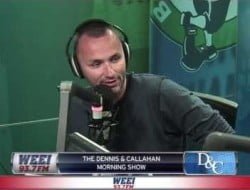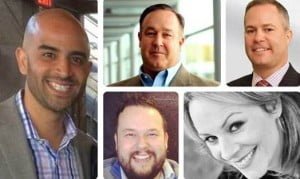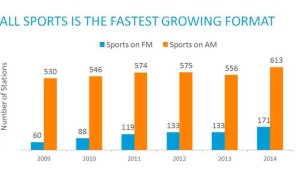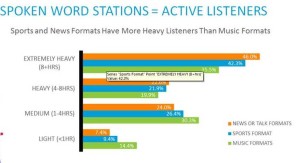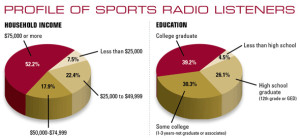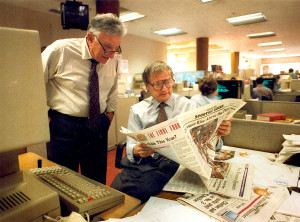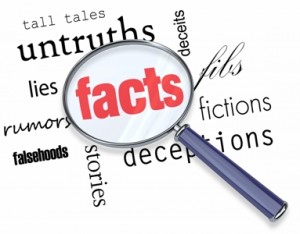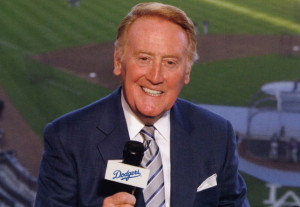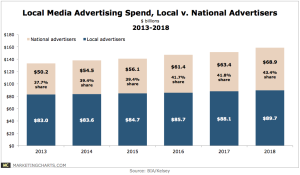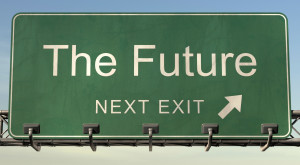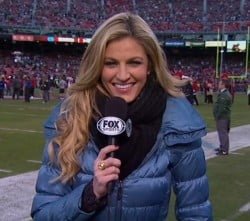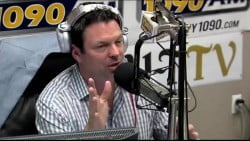When it comes to the sports media business, few people stay as busy as Scott Kaplan. Since 2001 Kaplan has been a steady presence on San Diego radio airwaves where he’s worked opposite former San Diego Charger Billy Ray Smith. The show “Scott & BR” has been a smashing success with local listeners and it’s opened up doors for Kaplan to branch out into other ventures.
Among those projects are a reality television show based on his experience as a horse racing stable manager at the Del Mar Thoroughbred Club, working as an NFL sideline reporter during Westwood One radio broadcasts and hosting his own television show “Kaplan at Night” on the start up television channel, U-T TV which was associated with the San Diego based newspaper U-T San Diego.
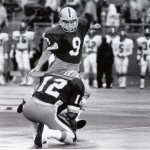 A former place kicker at the University of Pittsburgh from 1988-1992, Kaplan has a passion for competition which was on full display in 2010, when he raced in, and completed, the ‘toughest endurance race in the world’, the Ironman World Championship in Kona, Hawaii.
A former place kicker at the University of Pittsburgh from 1988-1992, Kaplan has a passion for competition which was on full display in 2010, when he raced in, and completed, the ‘toughest endurance race in the world’, the Ironman World Championship in Kona, Hawaii.
When I first heard Scott on the radio, he was working with Sid Rosenberg on 102.7 WNEW in New York City. While the “Sports Guys” as they were called back then didn’t last, what jumped out to me immediately was how much fun Scott & Sid had on the air together.
I can recall one particular day in 2000 where they had a guest in studio playing a guitar and jamming on a song he had wrote for the Subway Series and as the guy belted out lyric after lyric connected to a Yankees-Mets showdown, Scott & Sid were clapping and singing along and making it impossible to ignore the passion and fun that was about to unfold with the series. I became instantly engaged in the content, more excited about the game later that night and already looking forward to the next day’s show to hear what each of them had to say about it.
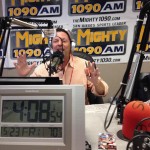 Fast forward to the present and whenever I’ve listened to Scott since he’s moved to San Diego, one of the first few things that jumps out is how authentic he is on the air. He doesn’t try to be someone he’s not and he puts his real life feelings and experiences on the air which I believe is a great trait that listeners can connect with.
Fast forward to the present and whenever I’ve listened to Scott since he’s moved to San Diego, one of the first few things that jumps out is how authentic he is on the air. He doesn’t try to be someone he’s not and he puts his real life feelings and experiences on the air which I believe is a great trait that listeners can connect with.
He can certainly agitate the audience and present passionate opinions plus he has a good sense of what the hot topics of the day are but more important than all of that, he comes across as the guy at the bar that you want to hang out with because he sounds like he truly has fun and loves what he does.
Case in point, watch this video clip of Scott sharing a rather personal story which undoubtedly will have you laughing your ass off.
I recently caught up with the Mighty 1090 talk show host to pick his brain on how he ascended to where he is today, how he’s handled some of the challenges that have come his way throughout the years and what he believes is important in trying to create a successful show each day and I think you’ll enjoy the discussion.
Q: First things first, how did you get started in sports talk radio?
A: I was cut by the Chicago Bears in 1994 early in training camp. I went home to South Florida and all my friends were buzzing about 560 WQAM. I called the radio station and arranged a meeting with the PD and that was literally my start.
Q: Who are your mentors and biggest influences?
A: When I arrived at WQAM, Andrew Ashwood was the PD. It turns out, way back when, Andrew and I shared an agent, Bruce Allen, who is now the GM of the Washington NFL football team. I don’t want to take the chance of being fired, so I won’t call them by their insulting name. Andrew became my mentor and close friend and he guided me and protected me from myself, particularly as a young broadcaster.
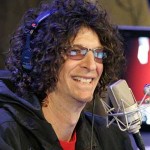 As for on air influences, there is no doubt that Howard Stern was the model for me. I wanted to be funny talking about sports. The way Howard was funny talking about whatever. In 1997 I went to the Super Bowl in Phoenix to work as a producer for Hank Goldberg who was the afternoon drive host at WQAM and no matter who I brought to Hank, he had plenty to talk to them about. Robert Kraft, Junior Seau, Marcus Allen, Bill Bidwell and the list went on and on of diverse interviews. This was way before anyone had laptops or the internet and Hank sat there and always had something to talk to them about. I said at that moment, that’s what I have to be able to do!
As for on air influences, there is no doubt that Howard Stern was the model for me. I wanted to be funny talking about sports. The way Howard was funny talking about whatever. In 1997 I went to the Super Bowl in Phoenix to work as a producer for Hank Goldberg who was the afternoon drive host at WQAM and no matter who I brought to Hank, he had plenty to talk to them about. Robert Kraft, Junior Seau, Marcus Allen, Bill Bidwell and the list went on and on of diverse interviews. This was way before anyone had laptops or the internet and Hank sat there and always had something to talk to them about. I said at that moment, that’s what I have to be able to do!
Q: When getting ready for each day’s show, what’s your routine? (what do you read, watch, listen to, who do you meet with, etc)
A: I start with my local paper, the UT San Diego. Then I read the LA Times. ESPN.com and CBSsports.com are my go to national sites and I like to hold a USA Today. I’ll watch the early SportsCenter and about an hour of CNN.
Then, as I am in my office, I’ll flip around between news and sports, and I listen to my colleague who leads us in, Darren Smith. I will have notes pre-written about topics that are not sports related, but rather, things I expect will connect with the audience, like fatherhood, being a husband, business, real life experiences, etc.
Q: How different is your job today vs. 10 years ago? What makes it different?
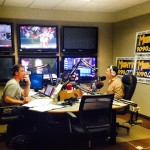 A: I would say that my job is different in that we have been on in the same market for 13 years and our audience knows us now so we don’t have to feel compelled to stay ‘on topic’ at all times. In this PPM world we get overwhelmed with research that says talk about topics A, B and C, but I still believe our audience likes it when we are just flowing and talking about nonsense.
A: I would say that my job is different in that we have been on in the same market for 13 years and our audience knows us now so we don’t have to feel compelled to stay ‘on topic’ at all times. In this PPM world we get overwhelmed with research that says talk about topics A, B and C, but I still believe our audience likes it when we are just flowing and talking about nonsense.
Q: Having done sports talk on the East and West Coast, what are the biggest differences in your opinion?
A: Rather obvious but the east coast has no patience and the west coast is much more forgiving. In San Diego when you say a coach should be fired, people are aghast! Whereas in NY, the fans expect you to lead the charge!
Q: Having been fired before, what’s the biggest thing you learned from the experience? How did it help or hurt you when receiving a second chance?
A: I have been fired several times, some legit, and others total bullshit. Ultimately what I have learned is, the media loves to feed on the media. For the most part, people in the media business can be lazy, rather than looking for the real story. It’s just easier to report what is on the surface.
Most recently, two years ago, I was fired, I sued the company, won, got my job back, and was able to push out the GM and CEO who unilaterally fired me. That said, in my new contract, language was very specific about GUARANTEES. Once I had a guaranteed contract, I was not going to apologize, I was going to just let it fly. Two years later I have chilled quite a bit, but I definitely came back with no fear of failure.
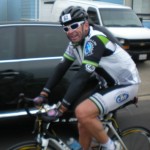 Q: How do you balance doing a show that’s important to you vs. what’s important to your audience?
Q: How do you balance doing a show that’s important to you vs. what’s important to your audience?
A: Well, here’s an example. I am involved in the horse racing industry, but I realize not everyone listening cares about horse racing. So I try not to go overboard with horse racing talk all summer. On the other hand, when I was training to do Ironman, I realized most people aren’t into triathlon but many found my willingness to share my story and ultimately complete the toughest endurance race in all of sports, inspiring! So I talked about it and took the audience on my journey. Years later people still tell me how inspired they were, and they changed their lives with the attitude, if he can do it so can I.
Q: As someone who hosts a show opposite a former NFL player, what are the advantages and disadvantages to working with someone who’s played the game at the highest level? Why do you believe so many sports stations across the country have adopted the model of pairing a radio broadcaster with an ex-athlete?
A: My partner, Billy Ray Smith, played for the Chargers for 10 years. He is an institution in San Diego. I love having a former superstar player as a partner because he doesn’t know anything about sports! I hope he reads this.
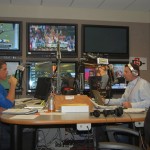 What I mean is, all of his opinions are based on being on the inside, they are never based on being an observer. But the truth is, we balance each other. BR is always pro team and when I am calling for a coach to be fired, or saying a season is over, he is the ultimate optimist! The combination of obnoxious/opinionated host, with former star athlete just works, assuming the team can get along and not take things personally.
What I mean is, all of his opinions are based on being on the inside, they are never based on being an observer. But the truth is, we balance each other. BR is always pro team and when I am calling for a coach to be fired, or saying a season is over, he is the ultimate optimist! The combination of obnoxious/opinionated host, with former star athlete just works, assuming the team can get along and not take things personally.
We have been working together for so long, we just do a dance, and we both know where to go. Sometimes the local teams get pissed at us because they think I am over the top and he is not apologetic enough but what they don’t see is the pre-show choreography that happens and that the dance is already planned because we represent both halves of the audience. Some fans will support things no matter what and that is Billy Ray. Some want people to pay for failure and that’s my side.
Q: With your partner being an instantly recognizable name and face in the market, how do you balance injecting your own opinion and asserting yourself vs. laying back and letting him or a member of the cast shine?
A: Our cast is a bit more diverse. Besides Billy Ray the former NFL star, we have the mom to our show, Linda Welby, who does sports updates, but so much more. She is supposed to keep me from stepping over the line but she usually leads me right to the edge. To answer the question, the truth is, listening and being a good listener is 80% of the game. You have to be able to think fast, talk fast, but listen well and know when to slow down.
 Q: When people listen to a sports radio show you’re hosting, what do you want them to take away from it?
Q: When people listen to a sports radio show you’re hosting, what do you want them to take away from it?
A: I want people to laugh, think, at times be moved, be pissed, agree, disagree, but in the end, I want people to have a strong opinion whether it’s “I love BR”, “I hate Scott” or whatever. The bottom line, I just don’t want to be vanilla!
Q: How often do you aircheck your show and analyze the ups and downs? Who’s involved in the feedback process?
A: We don’t aircheck that often any longer. But we talk to our PD, GM and CEO quite frequently to get their feedback.
Q: As someone who has a steady presence with multiple media outlets, how important do you think it is for a personality to build their brand in different spaces vs. focusing on just one platform?
A: In my opinion, the way the media business is today I think you have to do as much as you can, in the finite time you have. What I DO NOT want to be is a 65 year old unemployed radio host with no savings and no ability to get on the air. So I have branched out in a variety of different directions, hosting TV shows, writing for the local paper, producing my own TV series, etc.
 Q: Having worked in this industry for nearly 20 years, how do you stay energized, excited and interested vs. becoming fatigued and complacent?
Q: Having worked in this industry for nearly 20 years, how do you stay energized, excited and interested vs. becoming fatigued and complacent?
A: First, I know how fortunate I am to have a gig like this. I get to live in what I think is the greatest city in America, make a good living, and my radio presence and local notoriety drives my off air business interests so I am highly motivated not to fuck this up! Plus, I LOVE the stage of radio. For me the beauty is, every day is different, so I never have to fake it, because everyday I love it.
Q: As you move forward in your career, what else are you looking to accomplish?
A: Good question. Last year I produced my first reality series, Stable Wars, about my business and rivalries in the horse racing industry. Season 2 is currently in production. I want to do other unscripted series, not so much about things in my life, but stories and personalities that I think have mass appeal.
 Off air, I have lots of things I want to accomplish in business. I am driven by a quote I heard Mark Cuban mention during an interview on CNN and I am paraphrasing but he said, “I was chasing wealth not simply because I wanted money, I wanted freedom”. I couldn’t agree more!
Off air, I have lots of things I want to accomplish in business. I am driven by a quote I heard Mark Cuban mention during an interview on CNN and I am paraphrasing but he said, “I was chasing wealth not simply because I wanted money, I wanted freedom”. I couldn’t agree more!
Ultimately I would like to own a radio station and I am looking and waiting for the right opportunity to present itself.
Q: What advice would you offer to someone today who’s looking to enter this industry and become a sports talk radio personality?
A: Get your foot in the door and be humble and respectful to the people that have been working long and hard to get where they are. Do everything you are asked and a whole bunch more. No job or request can be beneath you! If you want your shot, prove it, don’t expect it!
The Scott & BR show featuring Scott Kaplan & Billy Ray Smith airs weekdays from 3pm-6pm in San Diego on The Mighty 1090. To hear the show, check out their podcast page by clicking here.



